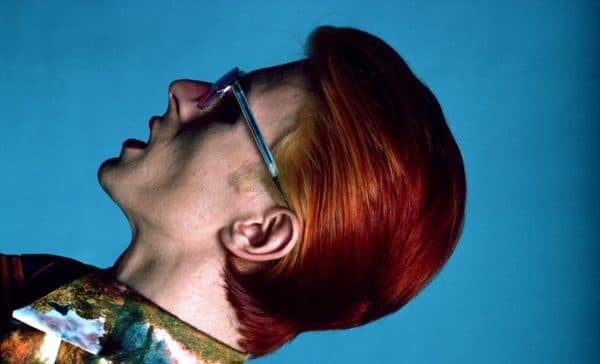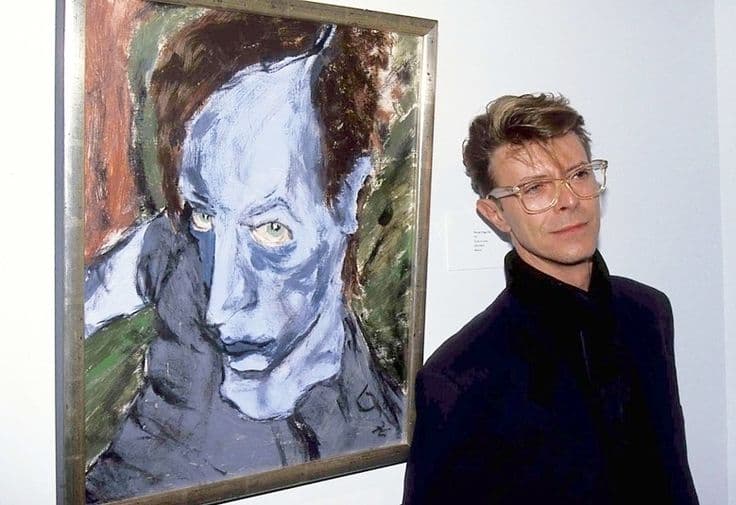
David Bowie the White Duke, Eternal Duke: honouring him eight years after his death
Determining where to start is not easy. There is so much to tell about the White Duke that one almost has the feeling of not being able to cope. About David Bowie it seems that everything has already been said and written. There are essays, websites, books, documentaries, newspaper articles… but we believe it is worth repeating and reiterating. All the more so today, 10 January, the anniversary of the death of this unforgettable man.
The White Duke: The icon of our time
The legacy he left us is immeasurable and encompasses a vast musical, artistic and visual heritage in the broadest sense of the term. Indeed, we have a great deal of photographic material of him from which we can see how metamorphic and chameleonic he was.
A style icon, he realised very early on that taking care of oneself and one’s image is of paramount importance for an artist. Therefore, there have been so many of David Bowie and almost all of these identities appear to us to be in open contrast to each other, while remaining faithful to one man, one artist and one visionary genius.
In what follows, however, we want to focus on one figure in particular, who precisely identifies himself as the White Duke‘s thoroughbred alter-ego. So let us see who it is and above all what imagery revolved around this name that accompanied him for the rest of his career.
The aristocratic thin White Duke


As mentioned above, Bowie was able to transform and reinvent his image in a way that few others were able to do. The White Duke in fact followed the Glam Rock period of a few years earlier. It was in this context that an eccentric, colourful and theatrical David Bowie became known, astonishing the world with his originality in presenting himself. In the period between 1976 and 1979, however, the change of direction is radical: we see a sober, elegant, noble man. An ethereal figure with almost hieratic connotations, the White Duke shows himself through an imagery that will accompany him for the rest of his life.
Cinema, photography and painting
During these years, the artist also evolved and explored the world of cinema (starring in The Man Who Fell to Earth), photography and painting. He became so attached to the latter that he used to take a pad of paper on tour where he could make sketches if he felt inspired. Mainly he painted post-modernist works, but he became very keen on contemporary art in general. For this reason, he organised a number of solo exhibitions and took it upon himself to help young emerging talents by giving them visibility.
Obviously, his music production was also influenced, which, at the turn of the 70s and 80s, veered towards a minimalist and ambient style.

Conceptual Composer
All this prompted the White Duke to go further: in 1977 he recorded the album Low, which gave him access to the world of conceptual music.
Between sparse lyrics and increasingly abstract music, his songs increasingly distanced themselves from the ‘plebeian’ world of pop and rock. Despite the powerful intellectual and committed aura, the album climbed the charts and reached number two in the UK, reconfirming how much Bowie was loved and followed by his fans.
Incredible, too, was the admiration he managed to garner among his peers, who appreciated his work and his ability to capture the zeitgeist in unison. Others include Philiph Glass, who said of Low:
It is a work of genius and incomparable beauty.
It did not have to wait long for Heroes to see the light of day and impose itself on the world music scene as Bowie’s most celebrated work. The album and its eponymous title track were recorded in Berlin and released on 23 September 1977. Although not immediately, they reached the top of the UK charts and beyond.
David Bowie, the man of records
In short, the White Duke represented and still represents an important slice of musical, artistic and poetic history. In his career, he has had the distinction of being one of the artists to sell the most albums (amounting to 150 million copies) and we have no difficulty in identifying the reason why.
Conclusion: The White Duke, David Bowie, is undoubtedly one of the most iconic and legendary figures of our time. We want to remember him.
Read more:
Golden Globes 2024 best outfits
NEWSLETTER
Vuoi ricevere Mam-e direttamente nella tua casella di posta? Iscriviti alla Newsletter, ti manderemo un’email a settimana con il meglio del nostro Magazine.


